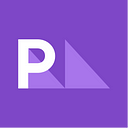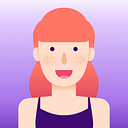Access for All: Innovative Approaches to Enhancing Accessibility
Accessibility is a critical issue that affects millions of people around the world. From physical impairments to cognitive and neurological challenges, many individuals face barriers to accessing information and participating fully in society.
When we think of disabilities, we often associate them with permanent conditions. However, disabilities can also be temporary, and it’s important to recognize and accommodate these individuals as well. Temporary disabilities can be caused by a wide range of factors, including illness, injury, surgery, and pregnancy. These conditions can make it difficult or impossible for individuals to perform certain activities, such as walking, lifting, or using their hands.
There are many ways we can increase accessibility and make the world a more inclusive place. In this article, we will explore some ideas on how we can have more accessibility and improve the lives of people with disabilities.
Increase Awareness
The first step in increasing accessibility is to raise awareness of the challenges faced by people with disabilities. We need to educate the public on the various disabilities that exist and how they affect people. This can be done through public service announcements, social media campaigns, and awareness-raising events.
By educating people, we can create a more inclusive society that values and accommodates people with disabilities.
Create More Accessible Spaces
One of the most significant challenges faced by people with disabilities is the lack of accessible spaces. Many buildings, public spaces, and transportation systems are not designed to accommodate people with disabilities. This makes it difficult or impossible for them to access essential services, participate in cultural activities, or simply enjoy the outdoors.
To address this challenge, we need to design and retrofit buildings, parks, and transportation systems to be more accessible. This includes features such as ramps, elevators, and audio signals that can benefit people with disabilities and everyone else.
Invest in Assistive Technology
Assistive technology can help people with disabilities to access information, communicate, and participate in society. However, many of these technologies can be expensive and difficult to obtain.
Governments, private organizations, and philanthropists can invest in assistive technology to make it more accessible and affordable for people with disabilities. This can include everything from screen readers and magnifiers to prosthetics and mobility aids.
Improve Education and Employment Opportunities
Education and employment are critical to the well-being and independence of people with disabilities. However, they often face barriers to accessing these opportunities, such as discrimination, lack of accommodations, and insufficient training.
Governments, educators, and employers can work together to create more inclusive environments that support people with disabilities in their education and employment goals. This can include providing training and resources for educators and employers, offering reasonable accommodations, and promoting diversity and inclusion in the workplace.
Ensure Accessibility in Digital Spaces
As more and more of our lives move online, it is essential to ensure that digital spaces are accessible to everyone. Websites, apps, and social media platforms should be designed to accommodate people with disabilities.
This can include features such as alternative text for images, closed captions for videos, and keyboard navigation for people who cannot use a mouse. By designing digital spaces with accessibility in mind, we can ensure that people with disabilities can participate fully in the digital world.
Here are some tips:
- Make your website or digital space compatible with screen readers: Ensure that your website or digital space is compatible with screen readers by providing alternative text for images and videos, and using descriptive headings for sections of text.
- Provide alternative formats: Consider offering alternative formats of your content, such as audio or braille versions, to cater to the needs of people with different types of disabilities.
- Use accessible fonts and colors: Choose fonts and colors that are easy to read for people with visual impairments. Avoid using low contrast color combinations, and use large fonts that are easy to read.
- Provide closed captioning and transcripts for videos: Captioning and transcripts make videos accessible to people with hearing impairments.
- Ensure keyboard accessibility: Make sure that all functions of your website or digital space can be accessed using only a keyboard. This is important for people who are unable to use a mouse or other pointing device.
- Test your website or digital space for accessibility: Use accessibility tools to test your website or digital space for accessibility. This will help you identify any accessibility issues and allow you to fix them before launching.
Resources
Additional Reading
👋 Feel Free to Clap and Share your Thoughts!
Find more at our LinkedIn, Instagram, and Twitter. Check our podcast. Follow our LinkedIn page and Newsletter!
Disclosure: At PM101, we strive to provide our readers with valuable and honest information on Product and Program Management. As a way to support the blog and continue providing valuable content, some blog posts may contain affiliate links or promotional content. By clicking on these links and making a purchase, the writer may receive a small commission at no additional cost to you. This commission helps to keep the blog running and allows the writer to continue providing valuable content and increasing her coffee and kombucha consumption. Rest assured, we will always provide honest and informative content and use affiliate links and promotional content only as a means to generate revenue to support the blog.

